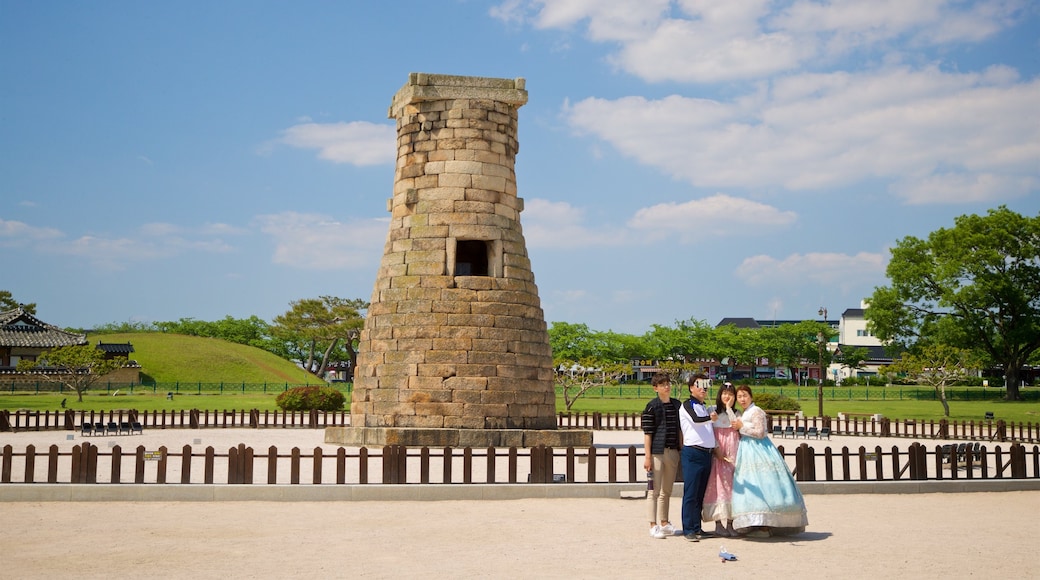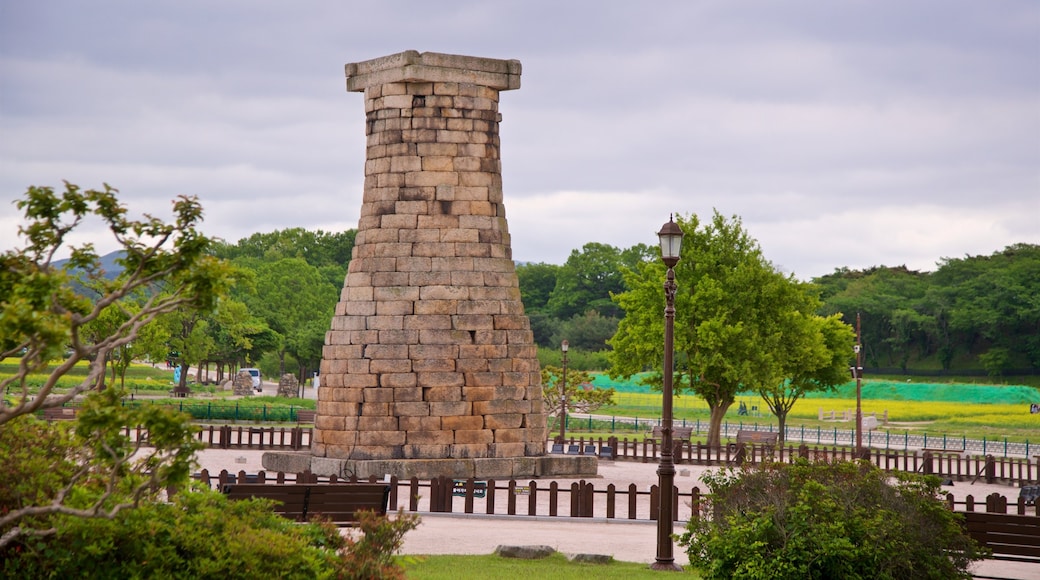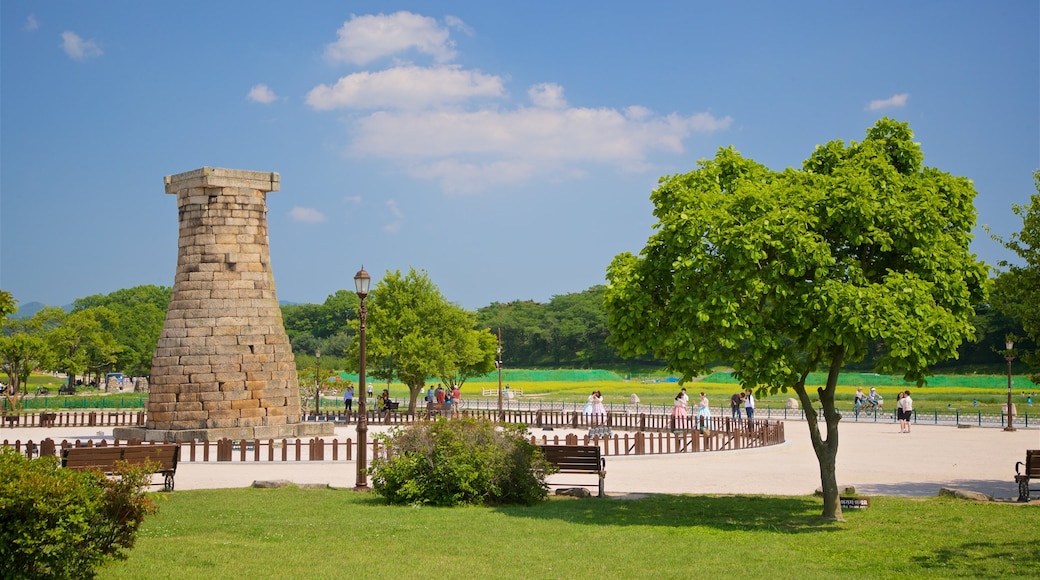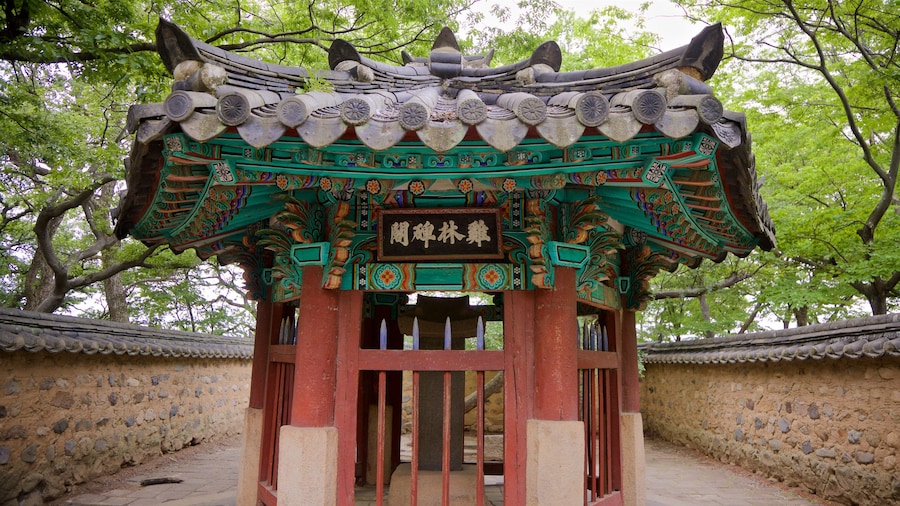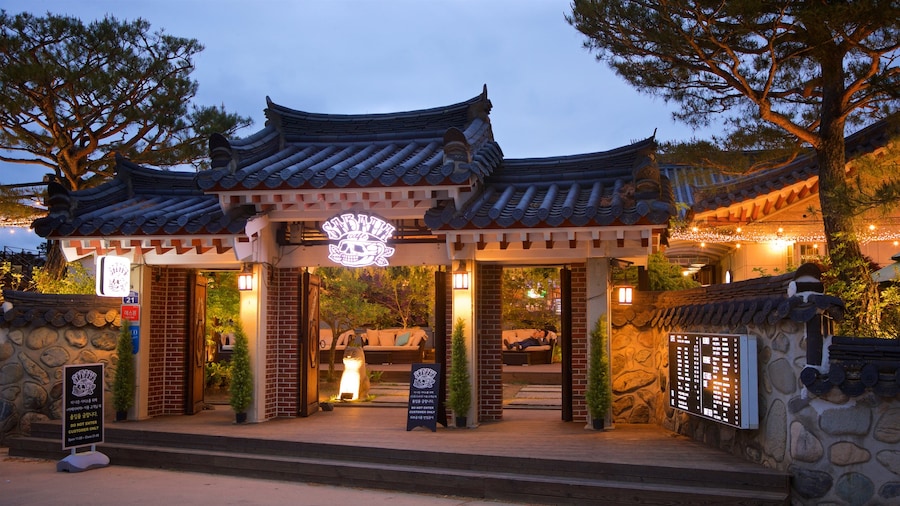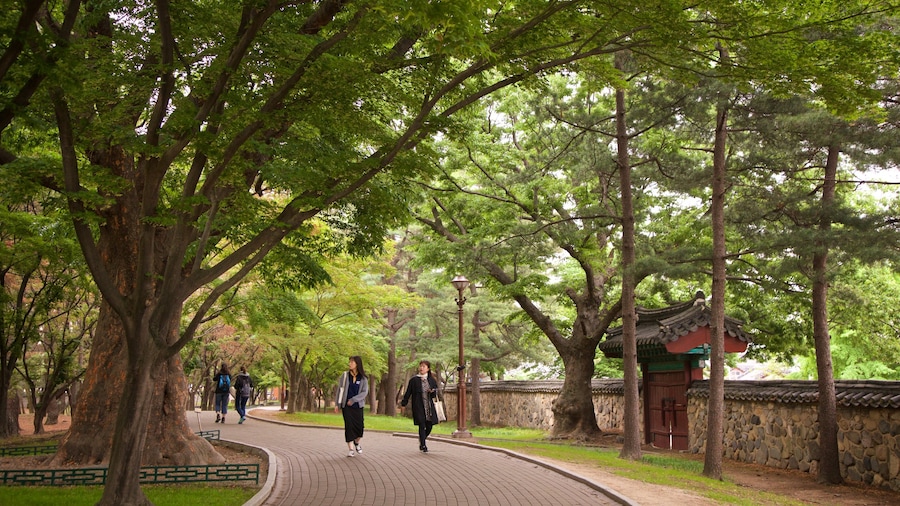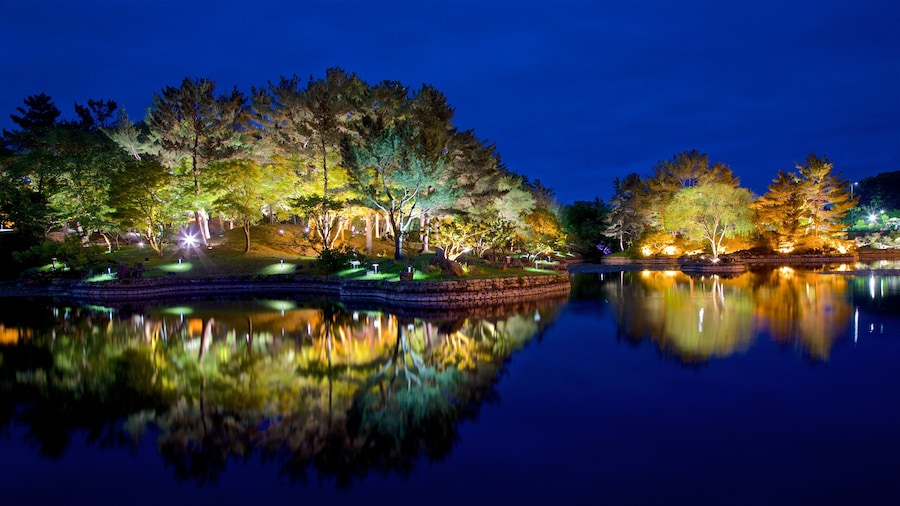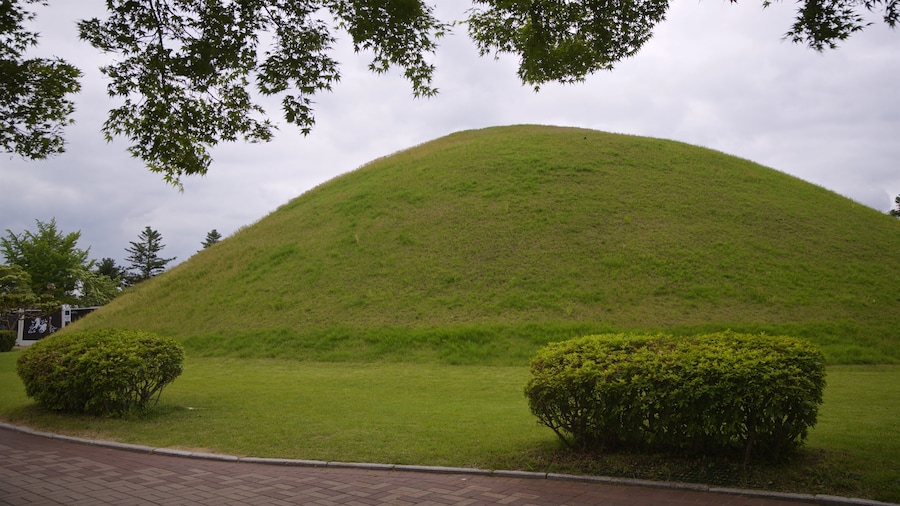A National Treasure of Korea, this ancient astronomical observatory, in the shape of a big bottle, is the oldest one of its kind in East Asia.
Cheomseongdae, which literally means “reverently regarding the stars platform” in Korean, takes us back to the early days of science in South Korea’s former Silla capital. Learn how astronomy was used in agriculture, religion and urban planning in South Korea, or simply come here to enjoy the vistas. The tower is surrounded by the green burial mounds that are known as “tumuli,”which are iconic for Gyeongju.
Walk around Cheomseongdae to see that the tower’s granite brickwork is still largely intact. That is impressive because this 30-foot (9-meter) tall tower dates all the way back to the 7th century.
If you stand at its southern end and look up, you can see an opening. This window was either used for studying the heavens above or worshipping, depending on who you ask.
Because the tower has a high-set window and its missing top platform may have once supported a sundial, most historians believe that the Cheomseongdae Royal Observatory was an astronomical tower. What supports this theory is that there are as many bricks as the days in a year and that there are 12 layers above and under the window, one for each lunar cycle.
It's also very possible that Cheomseongdae was a place of worship, dedicated to the Mesopotamian goddess Ishtar. Queen Seondeok, who ruled the Silla Dynasty between A.D. 632 and 647, revered Ishtar. Some point out that the tower’s shape depicts the female curves of Queen Seondeok herself. Queen Seondeok was the 27th monarch and you may have noticed that the tower happens to have 27 levels.
Come back at night to see Cheomseongdae when it is illuminated. The tower is surrounded by a low fence, so stargazing is not an option. Take a seat on a nearby bench instead and let your mind wander back to the time when both Buddhism and science were on the rise.
You can find Cheomseongdae in Inwang-dong, a district of Gyeongju. There is a small access fee to the national historic park where the observatory stands. The site is close to the Anapji pond, which is one of the city’s main tourist attractions and an even more atmospheric place to visit at night.


